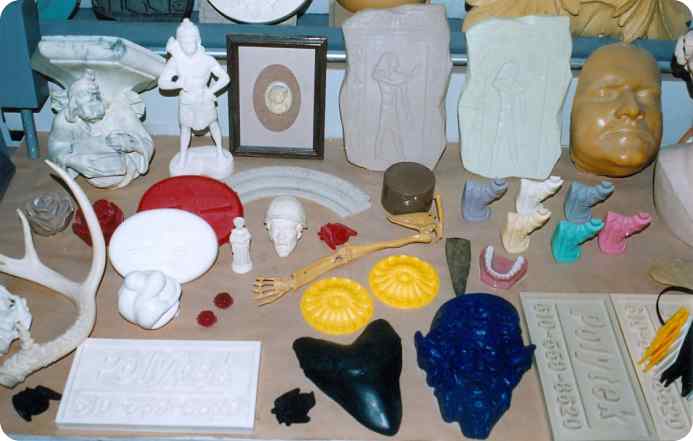This section is used for casting both finished tools and cores,not like injection moulding products. Since all tooling plastics cure by chemical reaction, this section must be equipped and organized so that no contaminating foreign substances contact the materials being cast. Consequently, dust, metallic particles, etc., must be kept to a minimum in such areas. The exact layout of this section depends on the size and type of tooling being built. A well equipped casting area should have the following facilities:
- Storage racks for barrels should be high enough to permit draining the materials directly into mixing vessels, i.e., in most cases, the valve in the drum should be about 42 inches from floor level. Racks should be mounted on casters and equipped with a floor lock to keep them stationary when in use. Steel storage cabinets should be provided for storage of smaller packages of plastics materials. To obtain maximum usable life of stored resins, phenolics require refrigeration at 30 to 35°F. Epoxies should be stored in a cool dry place.
- Accurate scales and balances are required to weigh out proper proportions of the various components of the resin system. Scales should be calibrated in ounces and have a 1000-lb maximum capacity. Balances may be standard commercial grade equipped with bronze weights cali brated in the metric system. All weighing equipment must be kept clean and periodically checked for accuracy.
- Handling equipment must be available to load and unload drums on the barrel racks, to transport mixing vessels to and from the mixing equipment, and to lift casting material over the mold being filled. The exact type of equipment will depend on the physical condition of the space allocated to this section. A monorail equipped with an electric hoist of 1000-lb capacity is usually the most convenient type; frequently a merry-go-round arrangement works satisfactorily.
- Mixing equipment which will provide complete and intimate mixing of components must be provided. Lightning type mixers should be pro 22 PLASTICS TOOLING vided for large mixes. Types are available for single mixes of 800 lb or 300 lb. Such equipment should be mounted on a stand equipped with a counterbalancing arrangement which will permit the agitator to operate in correct relation to the mixing vessel. All mixing vessels, agitators, and other equipment which will contact the plastics materials should be stainless steel. An electric clock is re quired to time the mixing operation.
- A good oven, though not always necessary, is an asset to any plastics tooling shop. The recirculated-air, indirect-fired gas type, or indirect electrically heated oven capable of maintaining temperatures ranging from 120 to 500°F, within ± 10°F, is recommended. Heat must be evenly distributed throughout the oven to avoid warpage during curing. Oven capacity and clearances depend on the type of work planned, but ovens should be of the walk-in type to reduce handling problems. Explosionproof construction must be used throughout. Oven experts should be consulted for exact data and recommendations, particularly where local safety ordinances are involved.
- Casting dollies for moving cast tools into and out of the oven should be provided. Dollies should be ruggedly built steel weldments mounted on suitable casters, and equipped with a floor lock. Dollies should be as low as possible to provide maximum head room inside the oven.
- Cleaning equipment should consist of brushes and scrapers, commonly used with proper solvents to remove heavier layers of material. Steel safety cans should be provided for storage of flammable solvents. A steel tank should be provided for the strong caustic solution used to remove phenolic materials which have hardened on mixing equipment.
Personnel of the casting section should be trained to be thoroughly familiar with plastics casting techniques. They must know how to secure plastic molds against leaks or bursting. They should be trained to practice personel hygiene in order to avoid dermatitis and other industrial hazards that can accompany the handling of chemical compounds.

